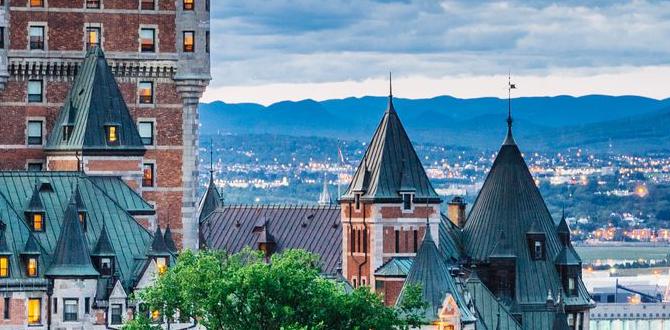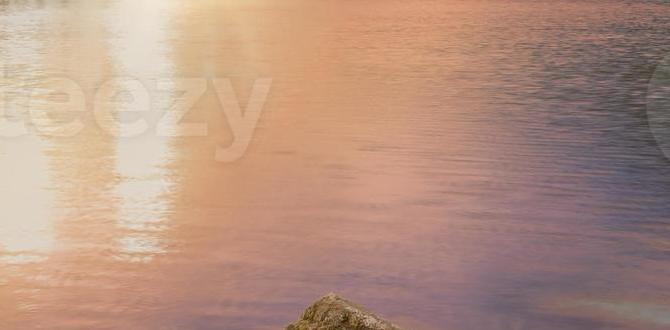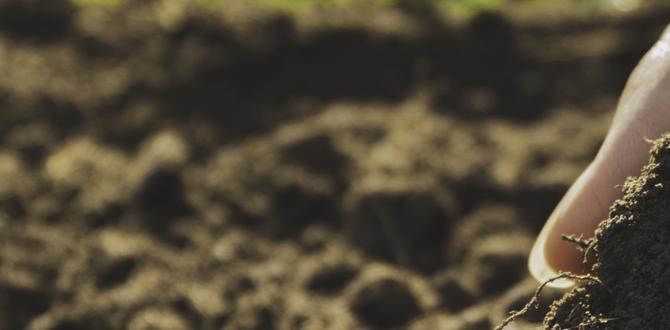Planning an Austria trip without the throngs? This guide reveals how to discover Austria’s charm, from Vienna’s grandeur to alpine serenity, by avoiding peak season and popular spots. Enjoy iconic sights with peace and ease, focusing on comfort and authentic experiences.
Dreaming of Austria, but picturing massive crowds? You’re not alone! Many imagine postcard-perfect scenes, only to find themselves shoulder-to-shoulder with thousands of other tourists. It can feel overwhelming, making it tough to truly soak in the magic of places like Vienna or the stunning Alps. But what if you could experience Austria’s beauty and culture without the stress of crowds? This guide is your key to unlocking a more relaxed, authentic Austrian adventure. We’ll walk you through smart strategies and delightful destinations that offer a refreshingly peaceful journey. Get ready to discover a different side of Austria, one that feels tailor-made for your comfort and enjoyment.
Why Choose an Austria No-Crowds Itinerary?
Traveling during off-peak times or seeking out less-hyped destinations comes with some wonderful perks. It’s not just about avoiding queues; it’s about a richer, more connected travel experience. Imagine strolling through historic palaces with space to breathe, enjoying local cafes without a wait, and having conversations with locals who have more time to share their stories. This approach often means better value for your money, too, with more affordable accommodation and flight deals. For families, it means less stress for parents managing children, and for solo travelers, it offers a greater sense of freedom and serendipity. Plus, discovering hidden gems that haven’t yet hit the mainstream travel radar is incredibly rewarding.
Timing Your Visit for Fewer Crowds
The season you choose to visit Austria can dramatically impact your experience. While summer is popular, it also brings the biggest crowds and the highest prices. Shoulder seasons, however, offer a beautiful compromise.
Spring Bloom or Autumn Hues
Consider visiting Austria in the spring (April to May) or autumn (September to October). In spring, the country shakes off its winter slumber, with blooming flowers in the gardens and pleasant temperatures for exploring. Autumn offers a spectacular display of fall foliage, particularly in the wine regions and mountainous areas. Both seasons provide comfortable weather for sightseeing and significantly fewer tourists compared to the peak summer months.
Winter Wonderland Without the Rush
While classic ski resorts can be busy during Christmas and February half-term, visiting Austria in early December or late January/early February can offer a magical winter experience with fewer people. Imagine charming Christmas markets before the main rush or enjoying snow-covered landscapes with more serenity. Skiing and snowboarding enthusiasts might find quieter slopes in less famous, but equally beautiful, resorts.
Strategic Destinations Off the Beaten Path
While Vienna, Salzburg, and Innsbruck are undeniably beautiful, they can get very crowded. To find peace and quiet, consider these alternatives or explore their surrounding regions.
Styria: Austria’s Green Heart
Often overlooked by international tourists, Styria is a region of rolling hills, vineyards, and thermal spas. Its capital, Graz, is a UNESCO World Heritage-listed city with a vibrant culinary scene and a relaxed atmosphere. The mountains offer fantastic hiking opportunities without the throngs found in Tyrol.
Carinthia: Lakes and Mountains
Located in the south, Carinthia boasts crystal-clear lakes like Wörthersee and Millstätter See, surrounded by the Julian Alps. It’s a paradise for outdoor activities such as swimming, boating, and hiking. The region is known for its laid-back lifestyle and stunning natural beauty, perfect for a tranquil escape.
Wachau Wine Route Serenity
While the Danube River is a popular cruise route, exploring the Wachau Valley by bike or car offers a more intimate experience. This UNESCO World Heritage site is famous for its picturesque vineyards, medieval castles, and charming villages like Dürnstein and Spitz. Visiting outside the main cruise season allows you to truly appreciate the romantic landscapes.
Upper Austria’s Cultural Treasures
Beyond the bustling city life, Upper Austria offers serene beauty. Consider exploring the Salzkammergut’s lesser-known lakes, like Attersee or Traunsee, or visiting towns like Steyr, a remarkably preserved medieval gem. The region’s cultural heritage can be savored without the rush.
Navigating Major Cities with Fewer Crowds
Even if you visit a popular city like Vienna or Salzburg, you can still employ strategies to avoid the worst crowds.
Early Bird Gets the Sights
This is perhaps the most effective strategy. Visiting major attractions like Schönbrunn Palace in Vienna or Mozart’s Birthplace in Salzburg right when they open can give you precious quiet time. Many sites are less crowded in the first hour or two of operation.
Explore Alternative Attractions
Instead of sticking to the absolute most famous landmarks, seek out the equally fascinating but less-visited spots. For example, in Vienna, consider exploring the Naschmarkt early in the morning, visiting hidden courtyards, or enjoying the Kunsthistorisches Museum’s vast collections during weekdays. In Salzburg, explore the charming Nonnberg Abbey or the charming St. Peter’s Cemetery rather than solely focusing on Mozart Square.
Weekdays Over Weekends
If your itinerary allows, plan your city visits for weekdays. Museums, attractions, and even popular cafes are typically less crowded from Monday to Friday than on Saturdays and Sundays.
Practical Tips for a Stress-Free Journey
Comfort and convenience can significantly enhance your travel experience, especially when aiming for a no-crowds approach. This includes mindful packing and having the right support systems in place.
Smart Packing Essentials
For a more relaxed trip, pack light but smart. Comfortable walking shoes are non-negotiable. Layers are key for fluctuating spring and autumn temperatures. Consider travel-friendly toiletries and perhaps a portable power bank to keep devices charged. For those who might need extra assurance, discreet personal care items like adult diapers or child diapers can provide peace of mind, especially during long travel days or when access to facilities might be uncertain. Brands like Depend or Tena offer options designed for maximum comfort and discretion.
Transportation Strategies
Austria has an excellent public transport system. The Österreichische Bundesbahnen (ÖBB) train network is efficient for inter-city travel. Booking train tickets in advance can often secure better prices. For exploring smaller towns and rural areas, renting a car can offer flexibility, especially when visiting less accessible, crowd-free spots. Consider train passes if you plan extensive travel by rail.
Booking Accommodation Wisely
When traveling off-season or to less popular destinations, you’ll find more availability and often better rates. Look for boutique hotels, guesthouses (Gasthöfe), or apartments in smaller towns. Staying slightly outside city centers but with good public transport links can also offer a quieter experience and cost savings.
Embrace Local Experiences
The best way to connect with Austria without the crowds is to engage with its local culture. Visit farmers’ markets, enjoy regional cuisine at traditional inns, attend local festivals (check schedules for smaller, regional events), or simply spend time in a village coffee house. These moments offer authentic insights and are far more serene than battling for a photo at a major landmark.
Sample No-Crowds Itinerary Ideas
Here are a few flexible itinerary ideas focusing on fewer crowds. These can be adapted based on your interests and the time of year.
Focus on Styria and Carinthia (7 Days)
Day 1-3: Graz & Surrounds
- Arrive in Graz. Explore the Old Town (UNESCO), the Uhrturm (Clock Tower), and the Mur Island.
- Day trip to the South Styrian Wine Route: Enjoy wine tasting and scenic drives. Visit charming villages like Gamlitz.
- Visit the Riegersburg Castle or explore Bad Radkersburg for its thermal springs.
Day 4-5: Styrian Lakes & Mountains
- Travel towards the Styrian Salzkammergut. Explore lakes like Grundlsee or Toplitzsee.
- Hike in the Dachstein region’s foothills, perhaps exploring Ramsau am Dachstein.
Day 6-7: Carinthian Serenity
- Drive to Carinthia. Settle in near Lake Wörthersee or Lake Millstätter See.
- Enjoy lakeside activities, cycling, or gentle hikes. Visit the Affenberg (Monkey Mountain) in Landskron for a unique experience.
- Depart from Klagenfurt or return to Graz/Vienna depending on flight arrangements.
Danube Valley and Upper Austria (5 Days)
Day 1-2: Wachau Valley Charm
- Arrive in Vienna, travel directly to the Wachau (approx. 1.5-2 hours by train/car).
- Base yourself in a town like Krems, Dürnstein, or Spitz.
- Cycle along the Danube, visit vineyards, explore the ruins of Dürnstein Castle, and sample local wines (especially Grüner Veltliner and Riesling).
Day 3-4: Exploring Linz & Environs
- Travel to Linz, Austria’s third-largest city.
- Explore the modern Ars Electronica Center, Pöstlingberg hill for views, and the historic Hauptplatz.
- Take a scenic boat trip on the Danube or visit the charming medieval town of Steyr.
Day 5: Return or Further Exploration
- Enjoy a final Austrian breakfast. Return to Vienna for departure, or explore more of Upper Austria’s countryside.
Alpine Regions Less Traveled (6 Days)
Day 1-2: Salzkammergut Outskirts
- Arrive potentially in Salzburg, but head directly to the less crowded eastern side of the Salzkammergut.
- Stay near lakes like Wolfgangsee (but explore the quieter shores) or the beautiful Hallstätter See (consider staying in Obertraun instead of Hallstatt town itself for fewer crowds).
- Enjoy hiking, boat trips, and scenic drives.
Day 3-4: Tyrolean Foothills or Vorarlberg
- Travel west towards Tyrol or Vorarlberg. Instead of Innsbruck, consider basing yourself in a town like Kufstein (Tyrol) or Bregenz (Vorarlberg).
- Explore the Kufstein Fortress or take a cable car up the Bürgeralm.
- In Vorarlberg, explore the shores of Lake Constance, visit the Bregenz Festival stage (even off-season), or drive the scenic Silvretta High Alpine Road (seasonal).
Day 5-6: Alpine Villages and Nature
- Seek out smaller villages for hiking and enjoying crisp mountain air. The Lech Valley in Vorarlberg or the Zillertal’s quieter side valleys offer beautiful scenery.
- Enjoy hearty Austrian mountain cuisine in a traditional Gasthof.
- Depart from Innsbruck, Zurich, or Munich depending on your chosen region.
Making it Work with Families and Special Needs
A no-crowds itinerary is especially beneficial for families and individuals with specific needs. Planning for comfort and convenience is paramount.
Family Travel Hacks
Traveling with children can be demanding, and avoiding long queues and crowded spaces significantly reduces stress. Choose accommodations with family rooms or apartments. Pack snacks and entertainment for younger travelers. Utilizing off-peak times means children have more space to move and explore without overwhelming them. Consider destinations with plenty of open spaces for them to run around, like parks or lakeshores in Styria or Carinthia.
Comfort and Discretion for Adults and Children
For travelers who require adult diapers or child diapers for health reasons, long journeys, or personal comfort, Austria offers privacy and accessibility. Choosing less crowded times and destinations means more relaxed bathroom breaks. High-quality, breathable adult diapers from brands like TENA or Depend, or reliable child diaper options, can ensure dryness and confidence throughout your travels. Packing an adequate supply in a discreet travel bag is essential. Consider travel-sized packs for daytime excursions.
Accessibility and Ease of Movement
Less crowded destinations often mean easier navigation. You’re less likely to encounter congestion on pathways, in museums, or on public transport. When planning activities, look for those described as being accessible, and don’t hesitate to contact attractions or accommodation providers in advance to inquire about specific needs. For instance, many Austrian castles have historical limitations, but less-visited ones might have more navigable grounds.
Budgeting for a No-Crowds Trip
An itinerary focused on fewer crowds can often be more budget-friendly.
| Category | Peak Season Costs (Estimate) | No-Crowds Season Costs (Estimate) | Savings Potential |
|---|---|---|---|
| Flights | €600 – €1200+ | €400 – €700 | 20-40% |
| Accommodation (per night) | €150 – €300+ (e.g., Vienna city center hotel) | €80 – €150 (e.g., boutique hotel/Gasthof in smaller town) | 30-50% |
| Attractions & Activities | High ticket prices, potential for skip-the-line passes | Standard prices, often less need for skip-the-line | 10-20% (less impulse spending, more value) |
| Food & Dining | Premium pricing in tourist hotspots | More affordable options, local eateries | 15-30% |
By traveling in the shoulder seasons (spring/autumn) or even during quieter winter weeks, you automatically tap into lower prices for flights and accommodation. Dining in smaller towns or away from the absolute main tourist strips also offers more authentic and affordable culinary experiences. Even transportation can be cheaper when booked in advance for off-peak travel periods. The overall experience is often more relaxing and can feel more luxurious due to the increased personal space and reduced stress, all while potentially saving money.
Your Peaceful Austrian Adventure Awaits
Planning an Austria trip doesn’t have to mean navigating through seas of people. By strategically choosing your travel dates, exploring off-the-beaten-path regions like Styria and Carinthia, and employing smart tactics even in popular cities, you can craft an itinerary focused on peace, comfort, and authentic experiences. Remember that comfortable packing, especially for personal needs, can drastically improve your journey’s ease. Whether you’re a family seeking a less stressful holiday or a solo traveler yearning for quiet contemplation, Austria’s charm is best discovered at your own pace. So, embrace these tips, pack your bags, and get ready to experience the heart of Austria without the crowds.
<h2 id="frequently-asked-questions-about-austria-no-crow





